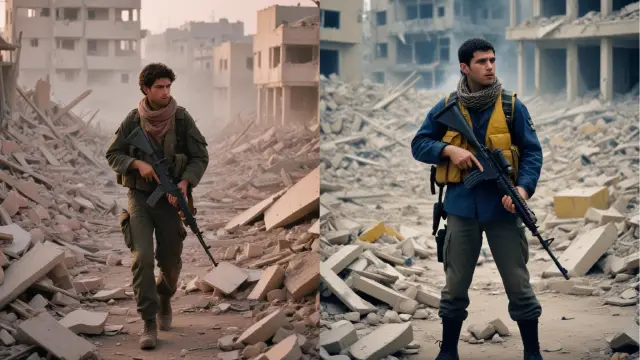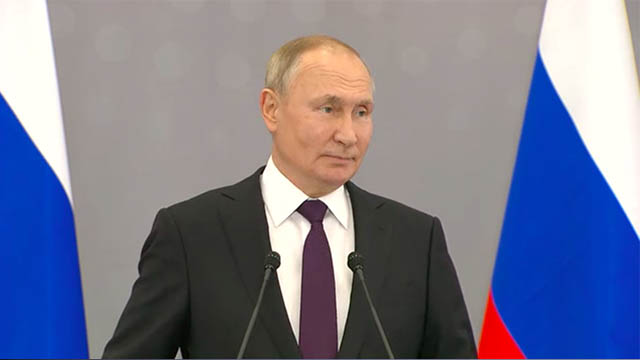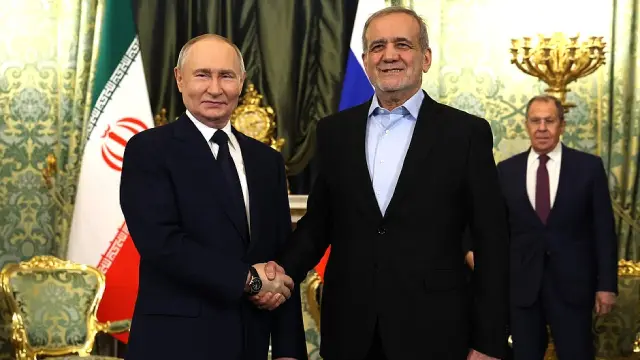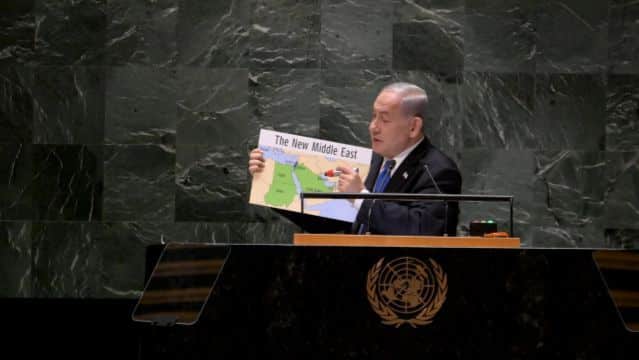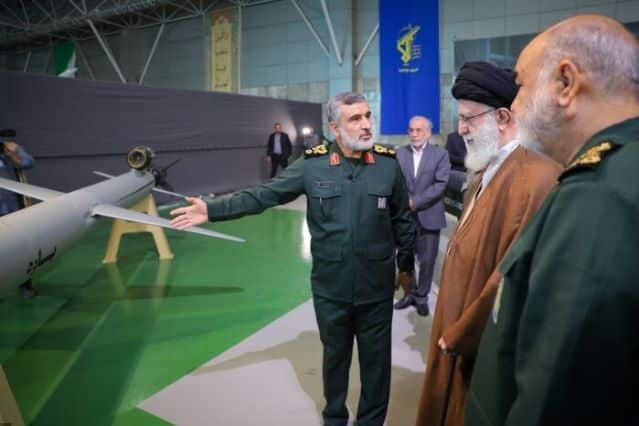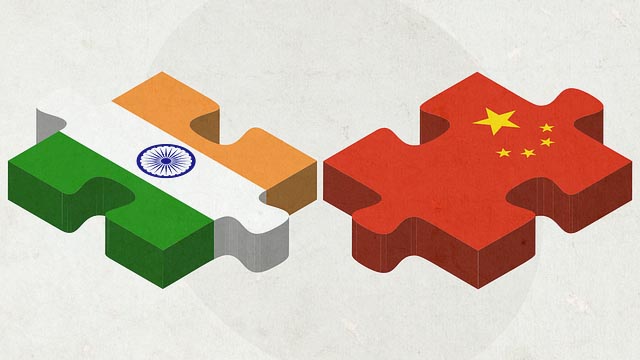The year 2024 started with Israel’s assaults on the civilians of Gaza and it ended with the continuation of what has been labelled as one of the largest genocides of the 21st century. Gaza has been turned into a heap of rubble and the Zionist aggression has also destroyed the neighbourhood. Lebanon is nearly ravaged and Syria has been turned into a fiefdom of several West-backed terror outfits. Israeli aggression has not just destroyed human lives and livelihoods in West Asia but, with careful manoeuvre, it has also nearly obliterated what was known as the ‘Axis of Resistance’ in 2024.
The killing of Iran’s former president Ebrahim Raisi in May 2024 appears as the catalyst that brought an end to the ‘Axis of Resistance’ that Tehran had built to counter US-backed Israel’s regional hegemony and expansionism in West Asia.
The near collapse of the Axis of Resistance is one of the principal events for which 2024 will be remembered. If 2023 had exposed the weaknesses of the US-led collective West, the last six months of 2024 showed how it started retaliating in a desperate bid to survive, and retain its hegemony over the world.
The collapse of Dr Bashar al-Assad’s Ba’ath Socialist Party’s rule in Syria after the US-Israel-Türkiye-backed Hayat Tahrir al-Sham (HTS), led by Abu Mohammed al-Jolani, occupied Damascus, has also been a major setback for the Axis of Resistance in 2024.
This incident took place soon after the Israeli forces annihilated Lebanese resistance organisation Hezbollah’s retaliatory capacities and decimated its leadership. Among other resistance organisations, only the Houthis of Yemen can keep up their act of resistance, even as Iran, the hydra of the axis, has retreated to its shell.
With Iran retreating, the fate of the Axis of Resistance seems sealed. Unless post-Raisi Iran changes its approach, it’s unlikely that the Axis of Resistance will rejuvenate itself very soon.
The big question is whether Iran wants to change. Whether Iran wants to assert itself or remain cocooned—this is what will shape the future of not only West Asia but also the fate of the Islamic Republic under the clergy’s rule.
What weakened the Axis of Resistance?
Iran had built the Axis of Resistance mainly to fight terrorists, including the al-Qaeda and Islamic State (ISIS) forces, that launched an onslaught against Syria to topple one of the last beacons of a secular government in the region ruled by the Ba’ath Socialist Party.
While Dr Assad received the support of Tehran, the Russian Air Force and the Lebanese resistance organisation Hezbollah, the terrorists received the support of Gulf monarchies including Saudi Arabia and the UAE, who were also fighting Iran-backed Houthi rebels in Yemen. Moreover, Türkiye, which is also a member of the North Atlantic Treaty Organisation (NATO), has been supporting the terror forces fighting Dr Assad in its bid to expand its regional hegemony and balkanise Syria.
After Dr Assad’s government won significant victories against the ‘rebel’—the terrorist—forces, a temporary stalemate was reached. Meanwhile, China’s mediation helped bring bitter foes Iran and Saudi Arabia together and the duo established diplomatic relations in 2023. Following the rapprochement, the civil war in Yemen, where Saudi-UAE aggression caused a massive genocide, also came to a stalemate. Syria was re-introduced to the Arab League ignoring the US’s diktats and West Asia, at least during the Arab League’s Summit in late 2023, when Tel Aviv initiated the Gaza genocide, and appeared united against Zionism.
However, what was brewing inside were the inherent and irreconcilable antagonisms between the different power centres aspiring for regional hegemony. While Iran wanted to play a pivotal role as the chief architect of anti-Zionist resistance, Saudi Arabia has been wary of losing regional influence to the Shiite clergy. Egypt, the UAE, Jordan, and other Arab countries that have been dealing with Israel remained firmly committed to the US-led collective West.
In this scenario, the Axis of Resistance remained Iran’s weapon—not just to resist the Zionist forces in Palestine and beyond, but also to bargain with other Arab forces. However, while doing so, Iran has continuously downplayed the strong Zionist intelligence network that operates in the region, including within the Islamic Republic.
Sensing trouble from the regional network built by Iran by threading together Hezbollah, the Ba’athist Syrian government, the Iraqi Shiite militia, Yemen’s Houthis and Palestine’s Hamas and other resistance organisations, the US-backed Israeli forces started their countermeasures to mitigate the risks. It all began five years ago.
In January 2020, the US killed General Qasem Soleimani, a reputed officer of Iran’s Islamic Revolutionary Guard Corps (IRGC) who played a pivotal role in defeating the multi-force juggernaut that attacked Syria from within and outside. Although Tehran vowed to avenge General Soleimani’s assassination, it couldn’t do anything substantial apart from rhetoric-mongering, which exposed Iran’s inherent weaknesses to the US-Israeli nexus.
Four years later, when Iran launched an attack on Israel in mid-April 2024 to avenge the killing of its top military and diplomatic officials during an Israeli attack on the Embassy of Iran in Damascus, Israel didn’t retaliate immediately. However, doubts were pinned on Israel when Mr Raisi was killed under mysterious circumstances with Iranian foreign minister and top officials in a helicopter crash. Iran didn’t respond to the allegations against it.
The events that unfolded following Mr Raisi’s death have indicated the intensification of a political crisis in Iran. On the one hand, the ailing Supreme Leader, Sayyed Ali Khamenei, found his political control over the Islamic Republic challenged when his endorsed candidate couldn’t win against Dr Massoud Pezeshkian, a moderate candidate, during the crucial presidential elections held after Mr Raisi’s death; on the other hand, a low voter turnout during the elections showed a growing discontent against the clergy’s rule in Iran.
Dr Pezeshkian’s victory, on the promises of rapprochement with the West and getting Iran’s nuclear deal back on track, showed that Mr Khamenei has been isolated within the ruling clique. Moreover, soon after Dr Pezeshkian’s victory, during his opening ceremony, an Israeli attack in Tehran killed Hamas leader Ismail Haniyeh, who was a state guest.
Israel waited to see the Iranian response but the latter didn’t respond immediately. Israel was emboldened when apart from rhetoric, Iran didn’t respond. It followed Israel’s triggering of pager blasts in Lebanon, killing and injuring scores of Hezbollah fighters throughout the country. While the Lebanese guerillas had managed to entangle Israel in the north with their rockets, the Zionist aggression on Lebanon in September crippled Hezbollah and wiped off its leadership, including the iconic secretary-general Hassan Nasrallah.
Although Iran’s missile attacks on Israel, done under the guise of retaliation, drew global attention, it didn’t inflict heavy damages and Israel’s retaliatory strikes ended up killing a few Iranian soldiers.
Following this round of calculated strikes and counter-strikes, Tehran stopped its military endeavours completely, further weakening the Axis of Resistance. While a disarrayed Hezbollah sought a ceasefire and an end to the conflict with Israel to protect its ranks, the onus of continuing the resistance fell on Syria and Yemen.
Axis of Resistance in Syria
Iran played a key role in building the Axis of Resistance during the peak of the Syrian civil war, which started in 2011. General Soleimani played the most remarkable role in protecting Dr Assad’s government.
The victory of Dr Assad’s government, backed by Russia, Lebanese Hezbollah and the IRGC-linked fighters, was a major achievement for the Axis of Resistance, which considered Syria as a closed chapter.
However, as soon as Israel decimated the Lebanese resistance, it ensured the fall of Damascus with the help of Türkiye. While Türkiye’s President Recep Tayyip Erdoğan had been vocal in criticising Israel’s aggression on Gaza and the West Bank, his government has been secretly aiding Tel Aviv, critics allege citing the Islamic country’s business with what it calls its bete noir.
The HTS led by Mr al-Jolani, which was marginalised completely in the so-called ‘civil war’ in Syria, managed to suddenly overtake the entire country due to the unbridled support offered by Israel and Erdoğan’s regime. As a loyal NATO member, Türkiye didn’t disappoint the US, despite its occasional rhetoric on Palestine.
With a poorly-trained army that lacked the motivation to fight the terrorists, Dr Assad couldn’t defend his country without the support of Hezbollah on the ground and the Russians on the air. However, Hezbollah was already decimated, Iran under Dr Pezeshkian has shifted from Mr Raisi’s era, with the Supreme Leader turning meek, and Russia, entangled in its special military operations in Ukraine, couldn’t divert its focus or forces to help an ally. All Moscow could do for Dr Assad was provide him with an asylum.
With Dr Assad’s fall, the Axis of Resistance lost a major outpost against Zionist forces and the West-backed terrorists who threatened the stability of the region. Mr al-Jolani, an al-Qaeda terrorist who is now embraced by the West, has declared the end of hostilities with Israel and the latter has occupied vast stretches of Syrian territories to expand itself. Moreover, Israel has destroyed Syria’s anti-aircraft defence mechanisms permanently to ensure zero risks posed by the terrorist-controlled country.
Russia, which earlier offered air support to Syria, started its endeavours to safeguard its interests in Syria by negotiating with the HTS. This mitigated the risk for Israel, which has remained careful during its attacks on Syria to ensure no Russian air bases are targeted. Russia also had been sharing locations of its forces with Israel to ensure its bases weren’t attacked.
Axis of Resistance in Yemen
Though the Houthi rebels had been fighting the Saudi aggression since 2015 until the stalemate, they were never at the forefront of world news until they launched a series of attacks targeting maritime traffic in the Red Sea, near the Gulf of Aden.
The Houthi attacks on cargo ships linked with Israel in protest of the “genocide in Palestine” quickly caught global attention as it caused a re-routing of cargo between Asia and Europe through the Cape of Good Hope, increasing the costs significantly. Moreover, the attacks by the Houthis also posed a significant threat to the Ben Gurion Canal plan of Israel, which requires the complete eviction of civilians from Gaza.
While the US and the UK launched attacks on Houthi rebel strongholds from December 2023, in December 2024, soon after destroying Syrian defence capabilities, Israel joined the US and the UK in launching a series of air raids on Sana, the Yemeni capital.
The bombing on Sana continued even on New Year’s Eve, while the Houthi rebels have shown no signs of retreat and have declared their intention to continue attacking cargo ships associated with Israel or its allies.
Yemen is now the last bastion of the Axis of Resistance and with Iran not actively supporting the Houthis, chances of them surviving the attacks by the trio seems bleak.
One of the trump cards that the US holds close to it is Saudi Arabia and, after Donald Trump’s presidency is inaugurated, Washington will likely persuade Riyadh to take initiatives, once more, to suppress the Houthis. This can prolong the conflict in the war-torn, poverty-hit country.
The problems of the Axis of Resistance
One of the principal problems of the Axis of Resistance has been its dependence on Iran. Moreover, different forces involved in the Axis underestimated the strength of their enemy and overestimated their strength without considering the geopolitical and military factors.
Palestinian resistance Hamas has been actively advocating for a long-term ceasefire with Israel. Even people like Mr Haniyeh had emphasised a ceasefire with Israel.
This approach of Hamas strongly contradicts its October 2023 approach when it launched Operation Al-Aqsa Flood calling it a permanent campaign to end the occupation of Gaza. It’s either that Hamas didn’t anticipate such a large-scale aggression and total annihilation campaign by Israel, which led it to believe it could win against the US-backed regime easily, or it was lured into a trap that Israel prepared for it.
With Hamas nearly exterminated in Gaza, the Hezbollah neutralised in Lebanon, Israel can now consolidate its forces against the resistance pockets in the West Bank.
Can the resistance fight it based on self-reliance?
In the present scenario, without active assistance from Iran, which is hard to come as the country looks forward to a transition at the Supreme Leader’s level and while it’s managed by a moderate like Dr Pezeshkian, the Palestinian resistance appears disarrayed.
The other big issue for the Axis of Resistance is the antipathy of the rich Arab monarchies to their cause due to sectarian and geopolitical issues.
Countries like Saudi Arabia, which is mending ties with Iran, remain reluctant to support the resistance as it eyes the baits dangled by the US-Israel-India nexus that has promised the India-Middle-East-Europe Economic Corridor (IMEC) through the kingdom.
Jordan, Egypt and the UAE have their relationships with Israel and they are keen to enhance their cooperation with the West for long-term geopolitical gains. Supporting the resistance would curb the opportunities for them.
While Iraq’s Shiite militia have been launching sporadic attacks targeting the Golan Height, the government remains reluctant to help the resistance as it fears Israeli retributions.
Finally, Iran’s allies—China and Russia—have not come to the rescue of the resistance for various reasons. Both China and Russia have diplomatic ties with Israel and are keen to protect their trade relations. Moreover, China is keen to retain its access to the US and the western markets. This compulsion makes it imperative for Beijing to not challenge the status quo while ensuring that it extends nominal support to the Palestinian resistance against the Israeli-US nexus.
For Russia, which played a pivotal role in defending the Ba’ath Socialist government in Syria from the onslaughts of the terror forces, entanglement in Ukraine is a crucial matter. If Russia loses to the NATO forces fighting against it in Ukraine, then it will embolden the US-led collective West, which is gripped by a severe crisis. Moscow, despite the risk of losing a stronghold in Syria, couldn’t divert its forces from the Ukrainian battlefield.
However, Russia comprehends, according to experts, that by defeating NATO in Ukraine, it can win the confidence of the monarchies in the Gulf, which tend to align with the most powerful lobby. If the US-led NATO is defeated in Ukraine, then Russia will be in a position to play a major role in West Asia.
In the meantime, the Axis of Resistance is surviving at the brink. It has to rely on its strength to continue its endeavour of fighting Israel. The chances of its survival appear bleak in 2025, however, without the Axis of Resistance, the hapless people of Palestine will be devoid of any bargaining opportunity.
Tanmoy Ibrahim is a journalist who writes extensively on geopolitics and political economy. During his two-decade-long career, he has written extensively on the economic aspects behind the rise of the ultra-right forces and communalism in India. A life-long student of the dynamic praxis of geopolitics, he emphasises the need for a multipolar world with multilateral ties for a peaceful future for all.

